In June of 1998, the Washington County (Oregon) Chorale spent 19 days touring Denmark, Sweden, and Norway. Thanks to the tireless efforts of Gunnar Serrander of Scan Travel Center in Sweden, we had an unforgettable tour and sang to enthusiastic, packed houses in spectacular sites.
Here are just a few photos from the trip. Sorry for the low resolution – this was the previous century!
Arriving in Copenhagen, we visited the city hall and dined at the Nimb restaurant in the famous Tivoli Gardens.
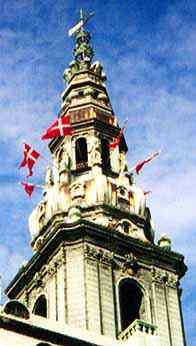
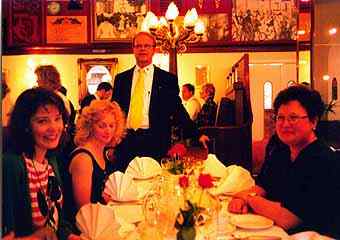
Later in the trip we visited several Swedish glass factories, among them Boda: skilled blowers slinging molten glass past their bare legs; no OSHA – it’s a different country, and according to the parking sign outside, they must be gods!
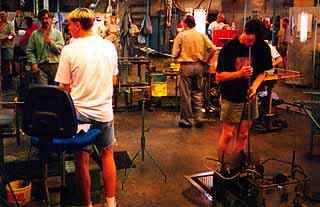

In the early days, the glassblowers would cook their dinners of salted herring and sausages in the glass cooling ovens, rather like some folks here who cook their picnic dinners on the car engine. The tradition continues today in the Hyttsill dinner at the glass factory: authentic sausages, potatoes, and salt-encrusted herring wrapped in newspaper, washed down with elderberry wine and schnappes while a roving accordianist sings songs of old — a grand time was had by all! By the way, the B1 Banana in Pajamas in that photo was our travelling companion throughout the trip.

Our midsummer festivities began with a trip around the lake in the historic steamer Thor and continued with us participating in the Växjö midsummer concert and dance.

The Swedish midsummer pole is a little different than the English maypole: it’s wrapped in greens instead of ribbons, and it has this crosspiece with two rings on it. The symbolism of the vertical pole is pretty easy to figure out, it being a fertility celebration and all, but when we asked the locals about the symbolism of the two rings, they just looked down at their shoes. Hmmm….
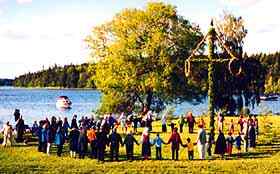
All of Sweden goes mad with delight at midsummer. I think I would too if my winter sun appeared for just an hour or so each day! Many Swedes have a rustic summer house in which to enjoy the sunlight and warm breezes of the season. This particular one is on display in Skansen, a collection of historic houses moved from all over Sweden and populated by reenactors. There’s a similar collection from Norway in the Oslo Folk Museum. Other stuff from Skansen: an old farmhouse (I’ve forgotten from which century) in which the father had a winter job of assembling clocks, and a runestone, repainted in its original colors. Runestones were a Viking activity, recording legal documents (e.g., “Eric died a Viking, and I’ve inherited his stuff.”) or memorials (e.g., “This stone was erected in memory of Lars, who died while viking in England.”).
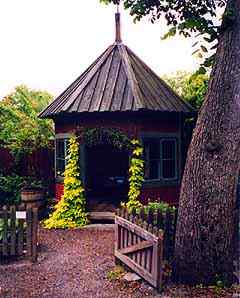
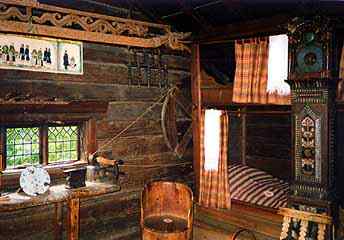

If you visit Stockholm, don’t miss the Vasa Museum, which contains the fully-restored warship Vasa from the 16th century. It’s too huge to get a good picture of, so I took a shot of a model. The Vasa is a great lesson to managers: after the keel was layed, the king decided to add a third gun deck to the ship. The shipbuilder protested, saying that the third deck would make the ship top-heavy, but the king wouldn’t listen. The ship was completed on schedule, third gundeck in place, and sailed out of Stockholm into a slight squall, then promptly tipped over and sank, carrying many dignitaries’ wives and children to the bottom.

Late in the trip we visited the Oslo Viking Museum, which contains the remains of three viking ships, built sometime between 800 and 1150, and placed inside the burial mounds of ancient kings and queens.
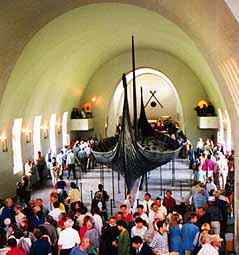

I’m a sucker for Gothic architecture, and Uppsala Cathedral, completed in 1435, is a beautiful example. Tour books say the exterior is unadorned — they must not have noticed the rose windows.

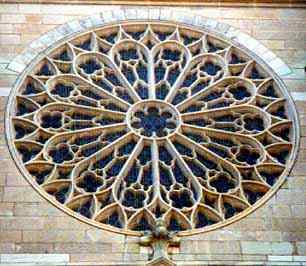
At any rate, the interior more than makes up for the plain exterior: soaring columns and tapestry-like vaults make the whole cathedral float like a canopy. A similar effect happens in the stave churches: ornate wooden houses of worship from, oh, the 1300’s. If my notes are correct, this photo is of the only surviving stave church in Sweden. An ambitous bishop tore most of them down to make room for more modern buildings.
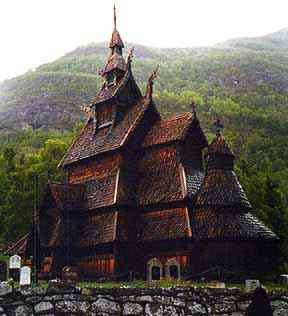
Did I mention there were fifty of us living out our days in a huge, pink tour bus?
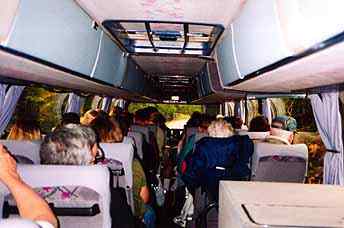
Some things just can’t be adequately captured on film. The grandeur of the fjords of Norway is a good example. Ya gotta be there to really appreciate ’em — we did through a leisurely ferry ride. What more can I say?

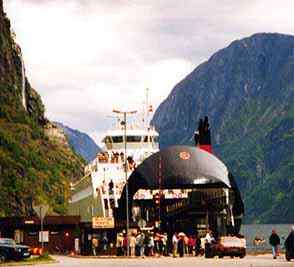
The high plateau of Norway is another impossible-to-capture sight. 6000 feet above sea level and nothing but ice, moss, and rocks (and a big, pink tour bus) for miles. Austere and beautiful.

I didn’t take photos of our concerts (’cause I was singin’, silly!), or many, many other delightful parts of our trip — sometimes, you just have to do stuff instead of taking pictures of stuff.
